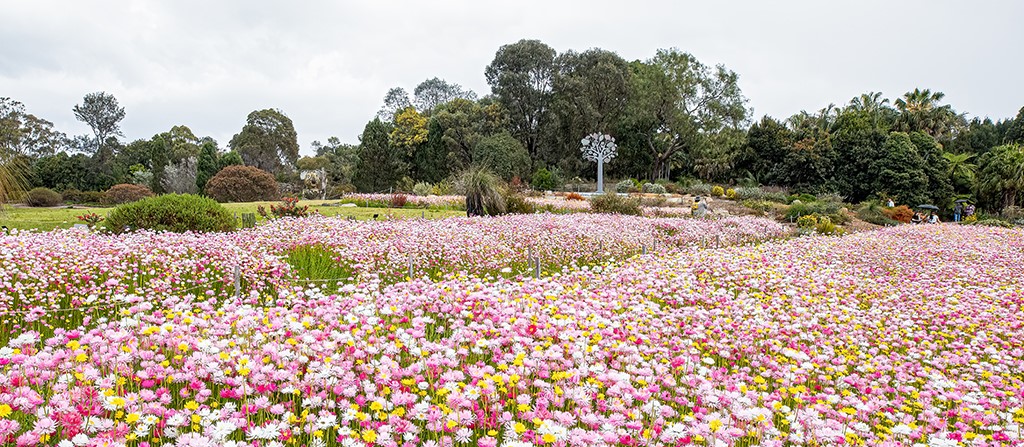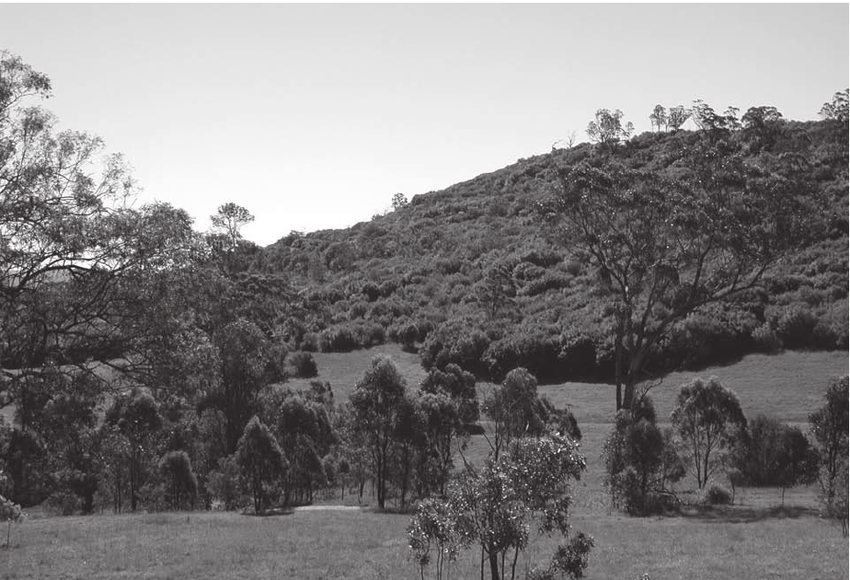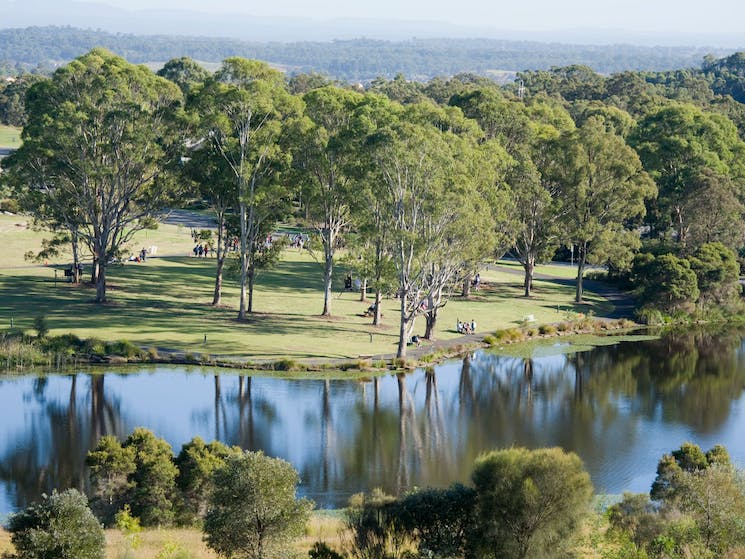
Nestled within the heart of Sydney lies a beautiful park, showcasing lush greenery, vivid blooms and a rich tapestry of Australian flora. The Australian Botanic Garden, situated in the suburb of Mount Annan, offers visitors a blend of natural beauty, history and recreational opportunities.
History and Background
Established in 1986, the Australian Botanic Garden in Sydney is part of the Royal Botanic Garden and Domain Trust. This Garden, which spans over 416 hectares, was designed with the dual purpose of conserving Australia’s unique plant life and offering an immersive experience to visitors. The Garden’s location in the southwestern suburbs of Sydney, specifically Mount Annan, was chosen for its suitability in showcasing a wide range of Australian ecosystems.
The history of this Garden is intertwined with the ongoing efforts to preserve and promote Australia’s rich botanical heritage. As you take a walk, you’ll come across various thematic sections, each representing a different Australian region. From the arid landscapes of the outback to the lush rainforests of Queensland, many landscapes are curated for an interesting exploration.

Ecosystems in the Australian Botanic Garden
The Australian Botanic Garden in Mount Annan showcases a diverse range of Australian ecosystems within their expansive grounds. Following are some of the ecosystems you can explore.
Woodland ecosystem: The Garden features woodlands that resemble the open forests found in many parts of Australia. These areas are home to a variety of eucalyptus trees, shrubs and grasses, creating a distinct ecosystem that supports native wildlife.
Heathland ecosystem: Some parts of the Garden mimic heathland ecosystems, which are characterised by low-growing shrubs, wildflowers and sandy soils. These areas showcase plants adapted to nutrient-poor conditions.
Wetland ecosystem: Wetlands play an important role in supporting biodiversity. These ecosystems provide a habitat for many species including waterbirds like swans and herons, frogs, fish, insects and aquatic plants.
Rainforest ecosystem: In certain sections, the Garden replicates the lush and diverse rainforests of Australia, particularly those found in northern regions. These areas feature dense vegetation, including ferns, palms and towering trees.
Desert and arid ecosystems: The Garden showcases arid landscapes like those found in the Australian outback. You’ll encounter arid-adapted plants such as succulents, spinifex grasses and unique desert flora.
Grassland and meadow ecosystem: Open grasslands and meadows are also represented in the Botanic Garden, showcasing native grasses and wildflowers. These ecosystems are home to various insects, birds and small mammals. It’s not uncommon to see kangaroos hopping across these grasslands!
Sclerophyll forest ecosystem: Sclerophyll forests are characterised by hard-leaved evergreen trees like eucalypts and acacias. These ecosystems are common in parts of Australia and support a range of wildlife such as native birds such kookaburras, as well as mammals like wallabies and possums.
What You Can See at the Botanic Garden
The Australian Botanic Garden is a botanical treasure trove, boasting an extensive collection of native plants. Among the sights you’ll encounter are:
- The Connections Garden: This garden, dedicated to showcasing the relationship between people and plants, offers a glimpse into the practical uses of native flora by Indigenous Australians and early settlers.
- The Rockery: Marvel at the vibrant array of Australian wildflowers that bloom among the rocky terrain, providing a striking contrast to the rugged landscape.
- The Sundial Garden: A tranquil spot for relaxation, this garden is adorned with a captivating sundial and a delightful collection of fragrant plants.
- The Lakeside Walk: Stroll along the picturesque lakeside, where you can spot various waterbirds and take in the serene views of the surrounding landscape.
- The Paperbark Grove: Wander through a grove of iconic paperbark trees.
- The Wattle Garden: Admire the golden blossoms of the wattle, Australia’s national floral emblem, which blooms in all its glory during late winter and early spring.

What Can You Do at the Mount Annan Botanic Garden?
During or after taking a stroll (or ride) through the Botanic Garden, you might want to do some extra activities. Some common activities are:
- Picnicking: Pack a picnic basket with your favourite treats and enjoy a leisurely lunch surrounded by nature. Numerous picnic areas are scattered throughout the Garden, providing a perfect opportunity for a relaxed family outing. In some of these picnic areas there are also barbeques, free for use.
- Photography: Capture the beauty of the Australian Botanic Garden, from vibrant blooms to scenic landscapes. Photography enthusiasts will find endless inspiration here. The Garden occasionally holds photography competitions, inviting visitors to capture the flora and fauna and submit their entries online.
- Birdwatching: With its diverse birdlife, the Garden offers an excellent opportunity for birdwatching. Keep an eye out for lorikeets, kookaburras and other native species.
- Guided tours: Join a guided tour to gain deeper insights into the Australian Botanic Garden’s history and ecology.
- Playground: The fully fenced playground includes a dedicated area for younger children with a slide and see-saw, a sandpit with pulley-operated buckets, swings, a timber and rope bridge, and an exciting flying fox. It also features picnic tables, benches, and ample grassy space for picnics and play.
- BYO activities: The expansive lawns and open spaces are ideal for outdoor games, yoga sessions or simply soaking up the sun. For family outings, some kids’ favourites include hide-and-seek, capture the flag or simply rolling down the grassy hills. If you’re the artistic type, you could bring some canvases and paint the beautiful landscapes. For the sport lovers, consider playing some cricket, soccer, frisbee or croquet.
Best Time to Visit the Australian Botanic Garden
Generally, weekends, school holidays and public holidays are the busiest days in the Australian Botanic Garden. The best time of day and year to visit the Australian Botanic Garden in Sydney will vary depending on your preferences and what you want to experience. Here’s a breakdown to help you decide:
Time of Day
- Morning: Many visitors prefer mornings because the weather is usually cooler, and the Botanic Garden is less crowded. Open at 8am, this is an excellent time for birdwatching and peaceful walks. The soft morning light also enhances the beauty of the plants and landscapes, making it ideal for photography.
- Late afternoon: Towards late afternoon, the Garden takes on a different charm as the sun’s angle changes. It’s a good time to capture warm, golden hour photos. The Garden is generally quieter in the late afternoon than midday.
- Night (special events): Occasionally, the Botanic Garden hosts special events and night tours, allowing visitors to experience the Garden in a unique way, often illuminated with creative lighting. If there isn’t a special event on, the Garden is usually closed by 5 or 7pm, just before sunset.
Time of Year
- Spring (September to November): Spring is a popular time to visit because many native plants, including wattles and wildflowers, are in full bloom. Additionally, the annual paper daisy display will cover 2000m2 of the Botanic Garden. The Garden bursts with colour during this season, creating a vibrant and visually stunning landscape.
- Autumn (March to May): Autumn brings cooler temperatures and is another pleasant time to visit. The changing foliage adds a touch of red and gold to parts of the landscape, making it a picturesque setting for a leisurely walk.
- Winter (June to August): While the Garden might be less colourful during winter, it’s still a great time for a visit. The weather is cooler, making it more comfortable for exploring than in the summer heat. Keep in mind that some plants may have different flowering seasons in winter, so you can still find some unique beauty.
- Summer (December to February): Summer can be hot in Sydney, so visiting during this time means you should be prepared for warm temperatures. During the day, the playground equipment can become extremely hot, so this is something to take into account. Early mornings and late afternoons can be more pleasant for outdoor activities. Summer is a good time to visit for those who enjoy long daylight hours, as the Australian Botanic Garden closes at 7pm instead of 5pm.
How to Get to the Australian Botanic Garden
The Australian Botanic Garden is easily accessible from Sydney’s city centre and surrounding suburbs. You can reach it by car, taking the M5 motorway and following the signs to Mount Annan. Alternatively, public transport options include trains and buses to Campbelltown, from where you can take a short taxi ride (or private Uber) to the Garden.
People often ask, “how much does it cost to go to the Australian Botanic Gardens?” The answer is – it doesn’t cost a cent! Explore the stunning gardens for free.

Group Accommodation Near Mount Annan
For groups seeking to make a weekend of it, there are several group accommodation venues in Sydney, ranging from deluxe hotels to cosy cabins. Booking in advance is advisable, especially during peak seasons.
Only 20 minutes away from the Australian Botanic Garden, Long Point Conference Centre boasts comfortable group accommodation for all sorts of events, including (but not limited to) family reunions, school camps, wellness retreats and Christian gatherings. With newly renovated dormitories and cabins, a tranquil swimming pool and sauna, a lush sports field, colourful playground, modern auditorium, cosy café and more, you’ll have everything you need for both a relaxing and action-packed stay.
Whether you just have general questions, or you are ready to book, contact us here! We look forward to hearing from you and providing you with a memorable stay.
